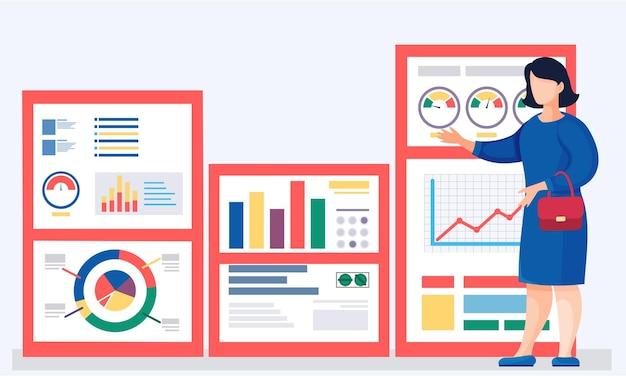Are you curious about how to measure software developer productivity? As technology continues to shape the world, software development plays a crucial role. But how can you gauge the effectiveness and efficiency of your developers? In this blog post, we’ll explore various methods, metrics, and tools for measuring developer productivity. From understanding what developer productivity entails to calculating it using specific performance metrics, we’ll give you valuable insights into evaluating the output of your software engineers. So, let’s dive in and discover how to measure software developer productivity effectively.
How to Evaluate the Productivity of Software Developers
Introduction
Software developer productivity is a key metric that every tech company wants to measure accurately. But how do you go about evaluating the coding prowess and efficiency of your development team? In this section, we will explore some effective ways to gauge software developer productivity and ensure your team is firing on all cylinders.
Analyzing Output Quantity
Quantity may not always equate to quality, but it’s still an important aspect to consider when evaluating developer productivity. One way to measure output quantity is by looking at the number of lines of code written by each developer. While this may not be a perfect indicator, it can provide some insights into their work rate and output levels.
Assessing Code Quality
Alongside quantity, it’s crucial to evaluate the quality of the code produced. Bug tracking metrics, such as the number of reported bugs or the time taken to fix them, can be useful in assessing code quality. Additionally, conducting code reviews can help identify and address any coding inefficiencies or vulnerabilities.
Tracking Project Timelines
Meeting deadlines is a significant factor in determining developer productivity. Tracking project timelines can help identify any bottlenecks or areas that need improvement. By evaluating how effectively developers meet deadlines, you can gain insights into their time management skills and ability to deliver on time.
Utilizing Agile Methodologies
Agile methodologies, such as Scrum or Kanban, can provide valuable data on developer productivity. Tracking the number of user stories completed or the velocity of each developer can give you a clear picture of their productivity levels within the agile framework.
Encouraging Collaboration and Communication
Measuring developer productivity isn’t just about individual output; it’s also about how well they work within a team. Encouraging collaboration and communication among team members can lead to more efficient workflows and improved productivity. Tools like Slack or Microsoft Teams can help facilitate seamless communication and collaboration.
Measuring software developer productivity involves evaluating various aspects, including output quantity, code quality, project timelines, adherence to agile methodologies, and collaborative abilities. By taking a holistic approach to measuring productivity and considering these factors, you can gain valuable insights into your development team’s performance and identify areas for improvement. Remember, productivity is not just about the quantity of work but also the quality and teamwork that goes into it.
What is Developer Productivity
Developer productivity refers to the efficiency and effectiveness with which software developers are able to complete their tasks and deliver high-quality code. It’s all about getting the job done, but it’s not just about the quantity of code produced – it’s also about the quality.
The Code Machine: Unleashing the Productivity Beast
Ever wondered what makes a highly productive developer? Picture this: a developer sitting at their desk, typing furiously, lines of code appearing on the screen at an astonishing rate. They seem like a coding machine, effortlessly churning out program after program. That’s the productivity beast!
The Balance of Speed and Quality
Productivity isn’t solely about how quickly code is written; it’s about finding the right balance between speed and quality. Producing code hastily might seem productive initially, but it can lead to greater debugging time and lower overall quality. On the other hand, obsessing over perfection can hinder progress and slow down development.
The Secret Ingredients
So, what does it take to be a highly productive developer? It’s not just about coding like lightning but also having a solid foundation of knowledge, using efficient tools, having clear goals, and effective communication with teammates. Furthermore, developers who are passionate about what they do tend to be more productive, as they invest more time and effort into continuously improving their skills.
Quality Code: The Holy Grail
High-quality code is the ultimate goal of any developer. It’s code that is clean, maintainable, and scalable. Writing quality code involves following best practices, adhering to coding standards, and constantly refactoring and optimizing code. It pays off in the long run, as it reduces the chances of introducing bugs, makes future changes easier, and enhances overall project productivity.
Metrics that Matter
When measuring developer productivity, it’s essential to focus on meaningful metrics rather than purely quantitative ones. Lines of code written or the number of tasks completed might sound impressive, but they don’t necessarily reflect true productivity. Instead, factors like code review feedback, bug count, customer satisfaction, and meeting deadlines offer more valuable insights into a developer’s productivity.
Wrapping It Up
In a nutshell, developer productivity goes beyond the notion of simply writing code quickly. It’s about finding the right balance between speed and quality, continuously improving skills, utilizing efficient tools, and working collaboratively with teammates. Remember, it’s not just about cranking out lines of code; it’s about creating high-quality, maintainable, and scalable solutions that drive the success of software development projects. So, unleash your inner coding beast while keeping an eye on the bigger picture!
How is Software Productivity Measured
When it comes to measuring software developer productivity, there are a few different approaches that can be used. In this section, we’ll explore some of the most common methods to give you an idea of how this whole productivity thing is measured.
Lines of code
One of the oldest and simplest ways to measure developer productivity is by counting the number of lines of code they write. The logic behind this method is that the more code a developer writes, the more productive they are. But, as with any simplistic measure, it can be misleading. After all, writing a lot of code doesn’t necessarily mean writing good code. It could just mean writing a lot of unnecessary, convoluted code. So, while lines of code can give you a rough idea of productivity, it’s important to take it with a grain of salt.
Functionality delivered
Another way to measure productivity is by looking at the functionality a developer delivers. This approach focuses on the end result – what did the developer actually accomplish? Did they deliver the features they were assigned on time? Did they meet the project goals? This method takes into account the quality of the code and the ability to deliver value to the end-users. So, if a developer consistently delivers high-quality features that meet or exceed expectations, they are likely to be considered highly productive.
Peer reviews and code quality
Productivity can also be measured by looking at the quality of the code a developer produces. Peer reviews and code quality assessments provide valuable insights into the developer’s skills, accuracy, and ability to write maintainable code. This method focuses on the craftsmanship of the code rather than just the quantity. So, if a developer consistently receives positive feedback from their peers and produces high-quality, well-structured code, it’s a good indication of their productivity.
Efficiency and time management
Efficiency and time management are also important factors when measuring productivity. How well does a developer manage their time? Are they able to handle multiple tasks efficiently? Do they consistently meet deadlines? Being able to effectively manage time and prioritize tasks shows that a developer is productive. It’s not just about how much work they can churn out, but also about how they can optimize their workflow and deliver results in a timely manner.
Measuring software developer productivity is a complex task, and there is no one-size-fits-all approach. Different organizations may use different methods depending on their goals and priorities. It’s important to remember that productivity is not just about quantity, but also about the quality of the work and the ability to deliver value. So, when it comes to measuring productivity, it’s crucial to consider a combination of factors such as lines of code, functionality delivered, code quality, and efficiency. By taking a holistic approach, you can gain a better understanding of a developer’s productivity and contribute to the overall success of your software development projects.
Software Developer Performance Metrics
What Are Software Developer Performance Metrics
When it comes to measuring software developer productivity, it’s essential to have the right metrics in place. These metrics help assess the performance of developers and provide valuable insights into their productivity levels.
Lines of Code (LOC)
One commonly used metric is the number of lines of code (LOC) written by a developer. While this metric can be deceiving, as quality matters more than quantity, it provides an initial indication of productivity. However, it is crucial to analyze the code’s complexity and effectiveness rather than solely relying on this metric.
Bug Resolution Rate (BRR)
Another important metric to measure a developer’s performance is the Bug Resolution Rate (BRR). This metric focuses on the ability to identify and fix bugs efficiently. A high BRR indicates a developer’s effectiveness in resolving issues promptly, while a low rate may indicate potential areas for improvement.
Feature Delivery Time (FDT)
Software development is all about delivering features to end-users. The Feature Delivery Time (FDT) metric measures the time taken by a developer to deliver a specific feature or functionality. It provides insights into their efficiency in completing assigned tasks and meeting deadlines.
Code Review Feedback
Code reviews play a crucial role in improving code quality. The amount and quality of feedback a developer receives during code reviews can also be used as a performance metric. Timely and constructive feedback is vital for personal growth and learning within a development team.
Collaboration and Communication
Software development is a team effort, and collaboration and communication are essential for success. Metrics that assess a developer’s ability to work well with others can include the number and quality of code reviews they participate in, contributions to team discussions, and responsiveness to team members’ inputs.
Self-Improvement and Knowledge Sharing
A highly productive developer continuously seeks self-improvement and shares their knowledge with others. Metrics to evaluate this can include the number and quality of technical articles or blog posts they write, presentations they give at conferences or internal meetings, and their engagement in mentorship or training programs.
Measuring software developer productivity requires a holistic approach, considering both quantitative and qualitative metrics. It is essential to strike a balance between productivity, code quality, and collaboration to build a thriving development team. By leveraging the right performance metrics, organizations can identify areas for improvement, motivate developers, and foster a culture of continuous learning and growth.
Developer Productivity Measurement Tools
Introduction
Measuring the productivity of software developers can be a tricky task. However, with the advancement of technology, there are now several tools available that can help in this process. In this section, we will explore some of the most popular developer productivity measurement tools and how they can assist in assessing the efficiency and effectiveness of software developers.
Code Quality and Complexity Analysis Tools
One of the crucial aspects of measuring developer productivity is analyzing the quality and complexity of code. Tools such as SonarQube and CodeClimate offer insightful metrics and visualizations to evaluate code quality and identify areas for improvement. These tools analyze code for code smells, adherence to best practices, and potential bugs or vulnerabilities. They give developers the opportunity to refactor their code and enhance its maintainability, leading to increased productivity over time.
Time Tracking and Activity Monitoring Tools
Many remote and distributed teams rely on time tracking tools, such as Toggl and Harvest, to monitor the time spent on tasks and projects. These tools not only help developers keep track of their work hours but also provide valuable insights into their productivity patterns. Activity monitoring tools, like the popular RescueTime, can track the time spent on various applications and websites, giving developers a clear picture of where their time is being invested and helping them identify potential distractions.
Collaboration and Communication Tools
Collaboration and effective communication play a vital role in developer productivity. Tools like Slack and Microsoft Teams provide instant messaging, file sharing, and video conferencing capabilities, enabling developers to seamlessly collaborate with team members, ask questions, and share ideas. These tools facilitate quick and efficient communication, fostering teamwork and productivity. Additionally, project management tools like Jira or Trello help developers organize their tasks, prioritize work, and track progress, improving overall productivity.
Continuous Integration and Continuous Deployment Tools
To ensure high productivity, development teams opt for continuous integration and continuous deployment (CI/CD) practices. CI/CD tools like Jenkins and GitLab automate the build, testing, and deployment processes, reducing manual effort and minimizing chances of errors. By integrating code changes frequently and deploying them regularly, developers can maintain a smooth workflow, detect issues early on, and deliver software faster, thus enhancing overall productivity.
In this section, we explored some of the key developer productivity measurement tools available in the market. These tools offer a range of functionalities, from code analysis to time tracking, collaboration, and CI/CD automation. By leveraging these tools, developers can gain valuable insights, streamline their workflow, and continuously improve their productivity. It’s important to remember that these tools are aids and should be used in conjunction with a comprehensive understanding of the software development process.
How Do You Calculate Developer Productivity
So, you want to measure the productivity of your software developers? It’s not as simple as counting the hours they spend coding, but fear not! There are a few ways you can calculate developer productivity without breaking a sweat.
1. Lines of Code? More Like Lines of Confusion!
First things first, forget about counting lines of code. Sure, it may sound like a straightforward way to measure productivity, but it’s not that reliable. After all, it’s not about how much code a developer writes, but how effective that code is. A few well-written lines can work wonders, while a whole paragraph of code could be a hot mess.
2. The Story of Completed Tasks
One way to measure developer productivity is by tracking their completed tasks. By keeping a record of the tasks they finish, you can get a good sense of their productivity level. Plus, it gives you a tangible metric to evaluate their progress. It’s like a scoreboard for developers, but instead of touchdowns, it’s all about lines of code conquered.
3. The Magical Metric: Velocity
Ah, velocity—every software developer’s favorite word. Velocity measures how much work a developer completes within a specific timeframe, usually in terms of story points or tasks. It’s like measuring how fast a developer can run while juggling different projects. So, keep an eye on velocity if you want to gauge productivity and see your developers sprinting ahead.
4. Pair Programming: Two Is Better Than One
Another way to measure productivity is by employing pair programming. This technique involves two developers working together on the same piece of code. By doing so, they can hold each other accountable and produce higher-quality work. Think of it as a dynamic duo, like Batman and Robin, but with fewer capes (well, maybe).
5. The Great Feedback Loop
Last but certainly not least, feedback is crucial for measuring developer productivity. Regularly providing constructive feedback to your developers helps identify areas where they can improve and excel. It’s like having a coach who gives you advice on the best way to swing that coding bat. With feedback, you can nurture your developers’ growth and watch their productivity soar.
And there you have it! Calculating developer productivity might not be an exact science, but with these strategies in your arsenal, you’ll have a better grasp on their performance than ever before. So, let the code counting commence… or maybe not.
How to Measure Software Engineer Performance
Introduction
When it comes to measuring software engineer performance, it can be a bit of a challenge. Unlike other professions, the productivity of a software developer is not easy to quantify. However, there are several key metrics and strategies that can help you assess their performance effectively. In this section, we will explore some practical ways to measure and evaluate the productivity of software engineers.
Setting Clear Goals and Expectations
One of the fundamental steps in measuring software engineer performance is setting clear goals and expectations. By providing your developers with well-defined objectives, you enable them to understand what is expected of them and how their performance will be assessed. With clear deliverables and deadlines in place, you can get a better grasp of their productivity levels.
Tracking Task Completion
Another way to measure software engineer performance is by tracking task completion. This can be done by implementing a project management tool or an issue tracking system. By monitoring the progress of different tasks, you can gain insights into how efficiently your developers are working, identify potential bottlenecks, and address any issues that may arise promptly.
Utilizing Code Quality Analysis
Code quality analysis is a powerful tool for evaluating software engineer performance. By examining factors such as code complexity, adherence to coding standards, and the presence of bugs or flaws, you can get an idea of the proficiency and attention to detail of your developers. Various code analysis tools are available that can provide valuable metrics and insights into the quality of the code produced.
Seeking Feedback from Team Members
A great way to measure software engineer performance is by seeking feedback from their peers and team members. Colleagues who work closely with the developer can provide valuable insights into their work ethic, collaboration skills, and overall contribution to the team. This feedback can help you identify areas for improvement and recognize exceptional performance.
Encouraging Continuous Learning and Development
Measuring software engineer performance is not just about tracking productivity; it’s also about fostering growth and improvement. Encourage your developers to participate in training programs, attend conferences, or pursue certifications. By investing in their professional development, you not only enhance their skills but also promote a culture of continuous learning within your team.
Measuring software engineer performance may not be an exact science, but by implementing the strategies mentioned above, you can gain valuable insights into their productivity and contribution to your organization. Remember, it’s important to consider multiple factors and not solely rely on quantitative metrics. By setting clear goals, tracking task completion, analyzing code quality, seeking feedback, and promoting continuous learning, you can effectively evaluate and support the performance of your software engineers.



